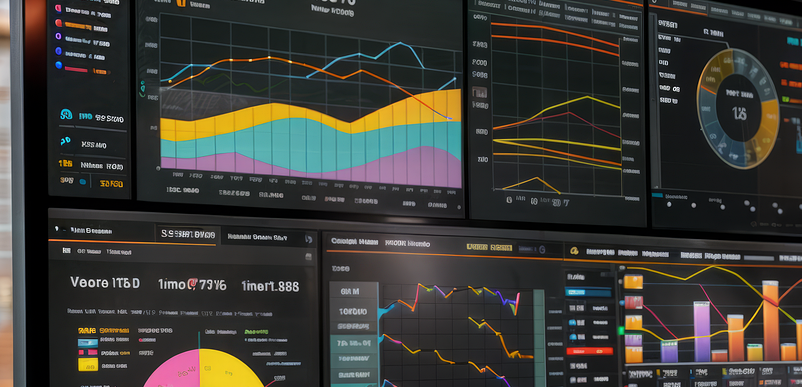
Contractmanagement is a critical function that ensures agreements between organizationsand their partners, vendors, and customers are executed efficiently and effectively. Contract managers play a vital role in this process, and their approach to managing contracts can significantly impact the outcomes. Two common approaches in contract management are being objective-focused and KPI-driven. Understanding the differences between these approaches can help contract managers choose the best strategy for their organization.
Objective-Focused Contract Management
An objective-focused approach in contract management centers around achieving broader organizational goals and strategic objectives. This approach prioritizes the overall mission and vision of the organization, aligning contract management practices with these higher-level goals.
Key Characteristics of Objective-Focused Contract Management
1. Alignment with Strategic Goals
Objective-focused contract managers ensure that all contracts support the organization’s strategic goals. This involves understanding the bigger picture and how each contract contributes to the organization’s long-term success.
2. Flexibility and Adaptability
This approach allows for greater flexibility and adaptability. Contractmanagers can make adjustments based on changing circumstances and evolving organizational needs, ensuring that contracts remain relevant and effective.
3. Holistic View
Objective-focused contract managers take a holistic view of contractmanagement. They consider the impact of contracts on various aspects of theorganization, including finances, operations, and stakeholder relationships.
4. Long-Term Perspective
Emphasizing long-term benefits over short-term gains is a hallmark ofobjective-focused contract management. Contract managers prioritize sustainable success and the overall health of the organization.
Advantages of Objective-Focused Contract Management
- Strategic Alignment: Ensures that contracts are aligned with the organization’s strategic goals and objectives.
- Flexibility: Allows for adjustments based on changing circumstances and evolving organizational needs.
- Holistic Approach: Considers the broader impact of contracts on theorganization.
Challenges of Objective-Focused Contract Management
- Measurement: It can be challenging to measure success and progress whenfocusing on broader objectives.
- Complexity: Requires a deep understanding of the organization’s strategic goals and how contracts contribute to them.
KPI-Driven Contract Management
A KPI-driven approach in contract management focuses on specific, measurable performance indicators. Key Performance Indicators (KPIs) are quantifiable metrics that track the performance and success of contracts. This approach emphasizes meeting predefined targets and benchmarks.
Key Characteristics of KPI-Driven Contract Management
1. Quantifiable Metrics
KPI-driven contract managers rely on quantifiable metrics to measuresuccess. These metrics can include financial performance, compliance rates,contract cycle times, and more.
2. Performance Monitoring
Continuous monitoring of performance against KPIs is a core aspect ofthis approach. Contract managers track progress and make data-driven decisionsto ensure targets are met.
3. Accountability
KPIs provide a clear framework for accountability. Contract managersand their teams are held accountable for meeting specific targets andbenchmarks.
4. Focus on Efficiency
This approach often emphasizes efficiency and productivity. Contractmanagers aim to streamline processes and reduce costs while meeting performancetargets.
Advantages of KPI-Driven Contract Management
- Measurability: Provides clear, quantifiable metrics to measure success and progress.
- Accountability: Establishes a framework for accountability, ensuring that contract managers and their teams meet specific targets.
- Efficiency: Emphasizes efficiency and productivity, driving improvements in contract management processes.
Challenges of KPI-Driven Contract Management
- Narrow Focus: Can lead to a narrow focus on specific metrics, potentially overlooking broader organizational goals.
- Rigidity: May lack the flexibility to adapt to changing circumstances and evolving organizational needs.
- Short-Term Orientation: Can prioritize short-term gains over long-term benefits.
Balancing Both Approaches
While objective-focused and KPI-driven approaches have distinct characteristics, the most effective contract management strategies often incorporate elements ofboth. Balancing these approaches can help contract managers achieve both short-term performance targets and long-term strategic goals.
Strategies for Balancing Both Approaches
1. Integrate KPIs with Strategic Objectives
Ensure that KPIs are aligned with the organization’s strategicobjectives. This integration helps maintain a focus on broader goals whiletracking specific performance metrics.
2. Regular Reviews and Adjustments
Conduct regular reviews of both KPIs and strategic objectives. Thisallows contract managers to make adjustments based on performance data and changing organizational needs.
3. Encourage Collaboration
Foster collaboration between contract managers and other stakeholders to ensure that both short-term targets and long-term goals are considered in decision-making.
4. Focus on Continuous Improvement
Emphasize continuous improvement by using KPIs to identify areas for enhancement while keeping strategic objectives in mind.
By understanding the differences between being objective-focused and KPI-driven,contract managers can adopt a balanced approach that leverages the strengths of both strategies. This balance can lead to more effective contract management, driving both immediate performance improvements and long-term organizational success.
As contract management continues to evolve, how can organizations best integrate objective-focused and KPI-driven approaches to optimize their contract management practices?
Follow & contact